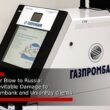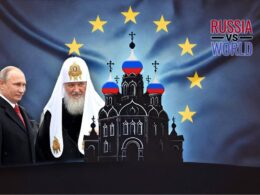Despite heavy sanctions from the UK and the EU, Russia continues to find ways to import luxury goods, including high-end European cars. A complex system has emerged in neighboring countries like Georgia, enabling these goods to reach Russian markets. This investigation reveals how the sanctions imposed on Russia after its invasion of Ukraine are being systematically bypassed.

The Georgian Connection
In the mountainous Caucasian region of Georgia, a bustling trade has formed. Convoys of trucks and car carriers frequently cross into Russia, laden with luxury vehicles that are technically banned under international sanctions. The road leading to the Lars checkpoint, the only direct crossing from Georgia into Russia, is often filled with high-end cars—brands like Mercedes, BMW, and Range Rover.
At first glance, it may seem that Georgia and neighboring states, such as Azerbaijan and Armenia, are simply importing these vehicles. However, data shows a sharp rise in car exports from these countries despite their lack of luxury car manufacturing capabilities. It’s clear that these states are serving as intermediaries, allowing the cars to enter Russia under the radar.


How the System Works
The process relies on a series of loopholes and transit arrangements. Cars are shipped to Georgia from ports or directly from European showrooms. Once there, they undergo paperwork and customs clearance, often involving the use of Armenia as a stopover point to obscure their final destination. While European countries have imposed their own bans on exporting luxury goods to Russia, the vehicles can still be driven across the border into Russia under the guise of being “in transit” to other countries.
Despite the effort to maintain a semblance of legality, those involved in the trade make no secret of the ultimate destination. As one participant noted, “Everyone knows these cars will stay in Russia.”
A Coordinated Trade Route
While high-end vehicles are the most visible products being smuggled into Russia, they are not the only ones. Electrical equipment and other crucial components, including drone parts, have also found their way into Russia via these informal routes. The sanctions regime, intended to cripple Russia’s military and luxury goods markets, is being quietly undermined.
Georgia and other states in the region are profiting immensely from this trade, benefiting economically from being transit hubs. For Russia, this enables the continued flow of luxury items for its elite, and more critically, necessary components for its military-industrial complex.
A Failing Sanctions Regime
The findings of this investigation underscore the challenges Western policymakers face in enforcing sanctions. Despite public promises that sanctions would stifle Russia’s economy, the reality on the ground tells a different story. Russian markets remain well-stocked, and the country’s wealthy individuals continue to enjoy access to Western luxuries. The informal trade routes through the Caucasus are providing Russia with an essential economic lifeline.
As the war in Ukraine continues, the ability of the West to restrict Russia’s access to luxury goods and critical components is under serious question. While sanctions remain in place on paper, this investigation highlights the gaps in enforcement that allow trade to continue largely unchecked.
Conclusion
The evidence uncovered in Georgia demonstrates that Russia has adapted quickly to the sanctions, exploiting weaknesses in the system. Without greater enforcement efforts and collaboration from neighboring countries, this trade is likely to persist, weakening the intended impact of Western sanctions and allowing Russia to sidestep the restrictions meant to isolate its economy. The West’s ability to curtail Russia’s war efforts and luxury consumption will depend on addressing this shadow trade, which continues to operate in plain sight.








